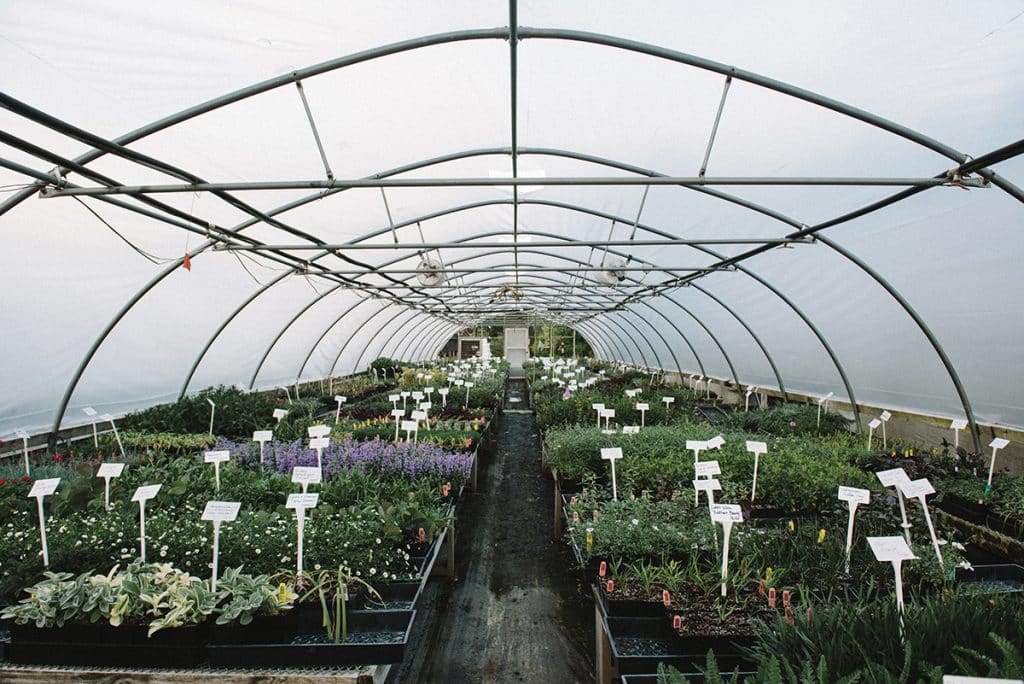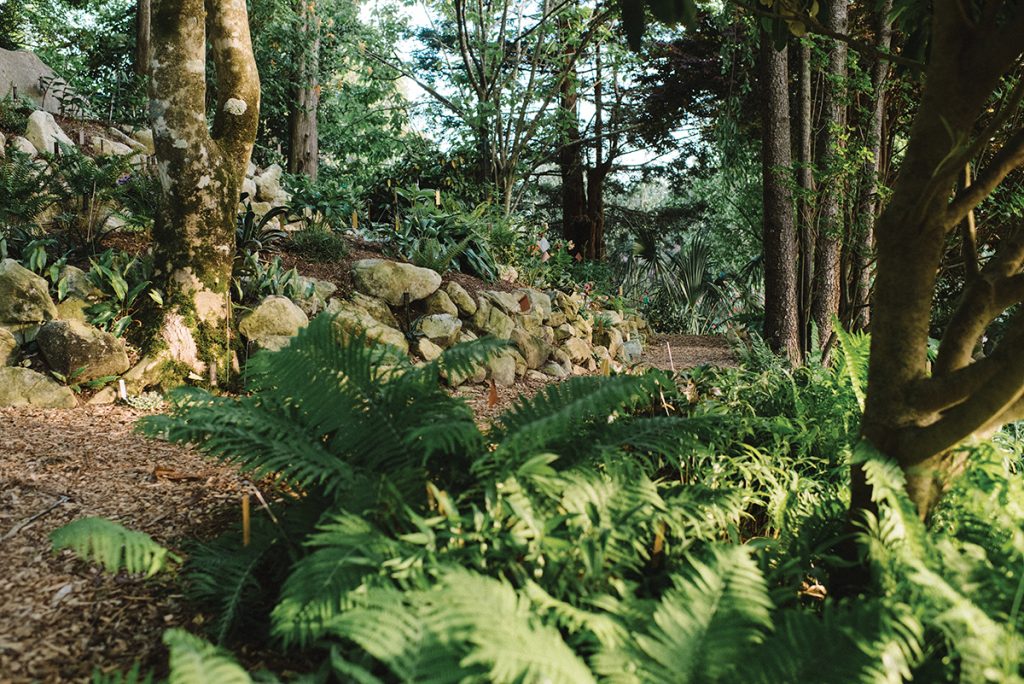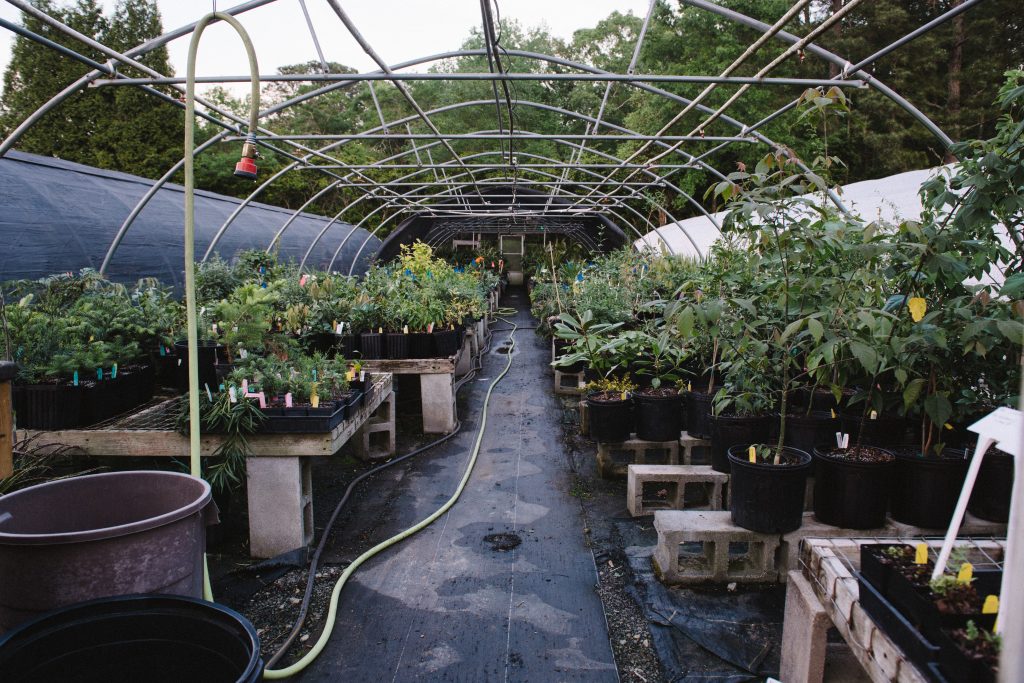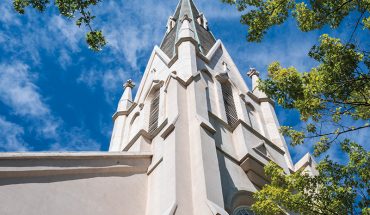Tony Avent and his late wife, Michelle, created a vast, plant-filled wonderland in Raleigh that’s open to the public several times a year
by Helen Yoest | photography by Jaclyn Morgan
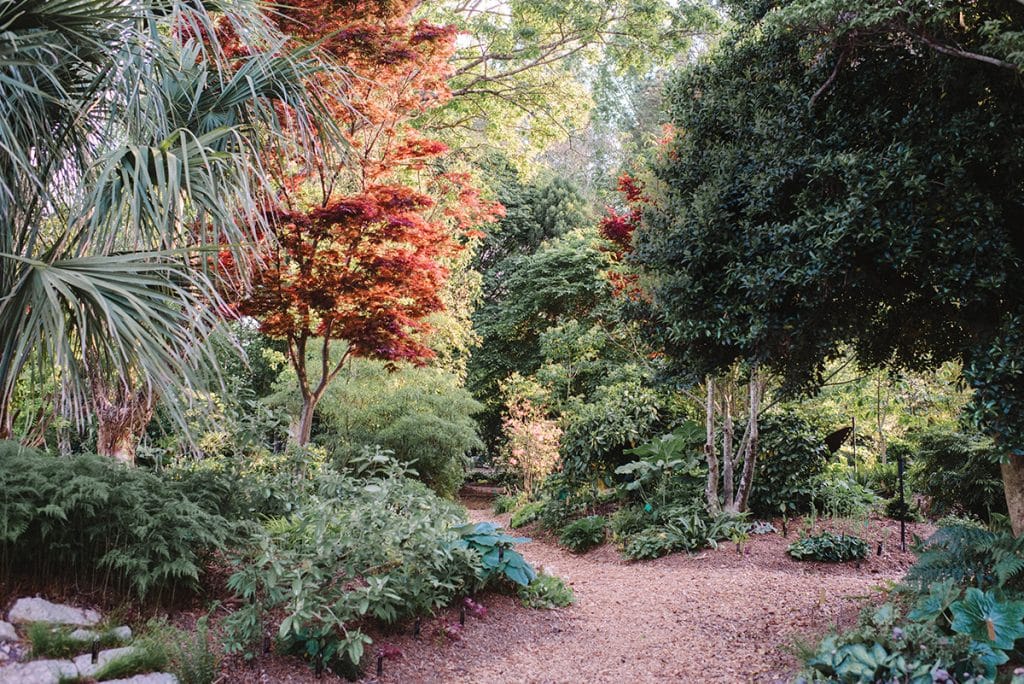
A short trip down what feels like a country road — by today’s standards in Raleigh, anyway — leads to the Juniper Level Botanic Garden. Located in the Juniper Level community of South Raleigh, it feels like you’re in another world. And indeed you are: this is one of the world’s most renowned botanic gardens, featuring nearly 30 acres of plants from all over the world.
The Juniper Level Botanic Garden (JLBG) started from humble beginnings but had big ambitions. “Since I was a young teen, I longed to build a garden for visitor discovery,” says Tony Avent, the garden’s co-founder. In 1986, Tony and his late wife, Michelle, moved to their first home, a two-acre plot in Juniper Level. There, they started a mail-order catalog company, Plant Delights Nursery at Juniper Level Gardens, with the plants they grew. They offered native plants but also unique and rare specimens obtained through collecting, creating, propagating and sharing.
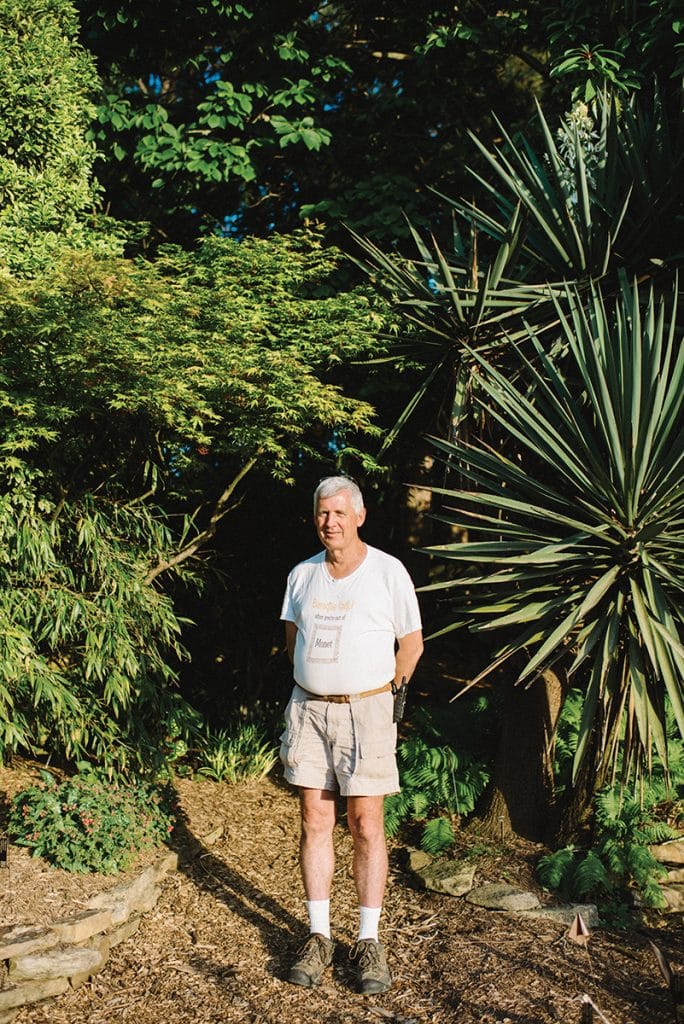
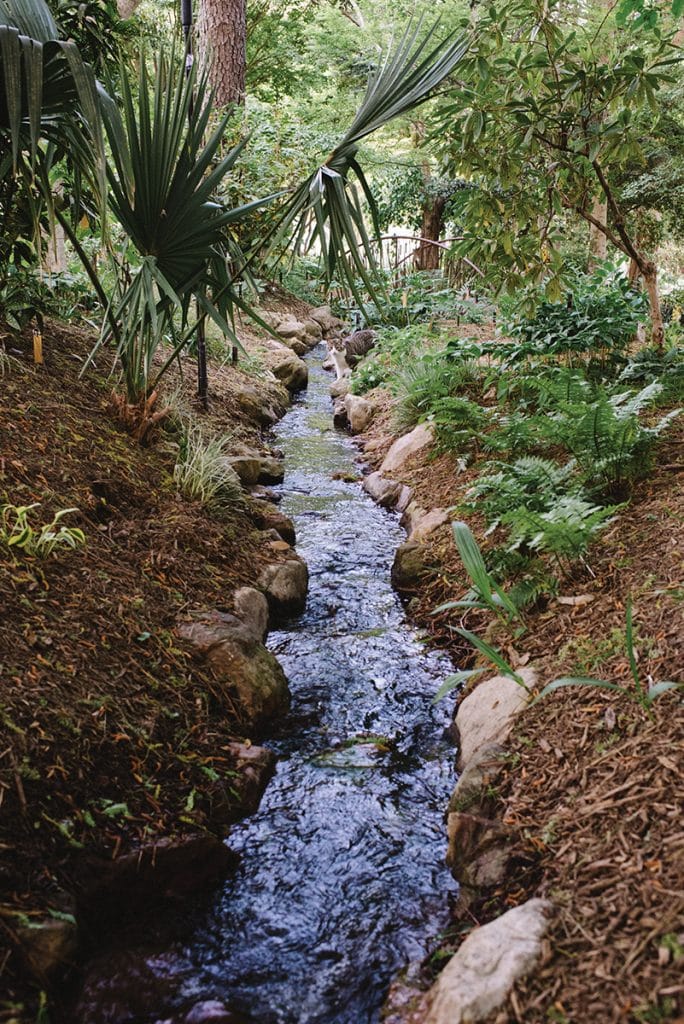
Over the next three decades, they were able to buy neighboring land, expanding to the current 28-acre footprint. Tony didn’t have a master plan for these purchases, he says: “I let the land tell me what its use would be.” Over time, that land has created plenty of space for sun and shade gardens along with more niche plantings like its Aquatic/Bog garden, the Basalt fountain garden and a collection of hardy banana trees. “Now, the land provides a place for education, propagation, research, plant sales and visitors,” says Tony.
The first 2.2 acres of land are still part of the gardens. Called the Founder’s Garden, this area is heavily planted and has meandering paths that lead from one garden collection to another. Here, visitors will find the original grotto garden, a small rock garden and a bog, with plantings tucked in all available space. “When walking through the garden, you’ll find you need to traverse the same path in both directions not to miss any plant treasures,” says Tony.
After purchasing the Yde Horse Farm next door and selling the horses, the Avents were able to find a use for everything on the property except the concrete. “Then the idea came to create a Crevice Garden,” says Tony. On-site landscape designer Jeremy Schmidt used broken pieces of the material to create its structure. “He placed the pieces like books on a shelf, with curves and just enough space in between for planting,” says Tony, who filled the crevices with agaves, baptisia hybrids, salvias and other dryland plants from his breeding programs.
Michelle’s Garden, honoring Tony’s late wife, features a plant collection with more than 9,000 taxa collected from all over the world. In the middle of this collection is a house for staff offices, Southwest-style plantings and a potted collection of variegated agave from all over the world. Here, too, is the famed Mt. Michelle waterfall, which is sustained by recycled water from the garden’s innovative rain garden.
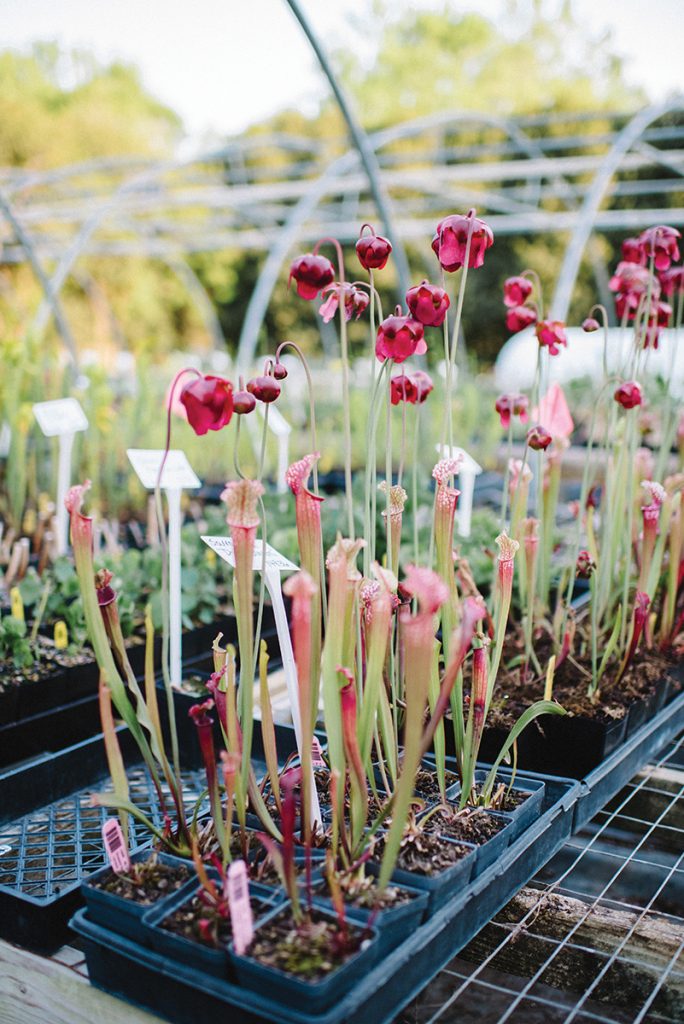
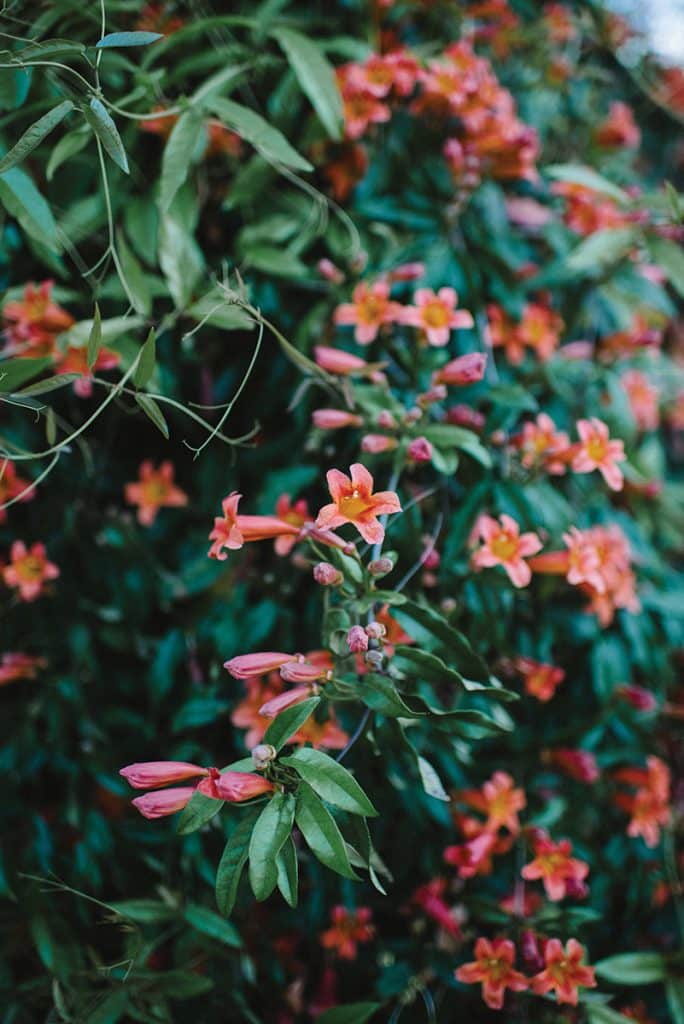
The Souto Garden was named to honor Tony’s late neighbor, Eddy Souto, and features full-sun plants. The berm plants feature over 125 different agave selections, most hybridized at JLBG, plus hardy barrel cactus and two large Acacia species and other plants that thrive on dry land.
The garden operates at a break-even point, says Tony, with nursery sales funding the JLBG. “Every dime Plant Delights makes goes back into the gardens and research,” he says. In June 2016, Avent endowed the garden to North Carolina State University, his alma mater. Last year, JLBG also started a membership program with varying benefits to fund the endowment, but thus far, the endowment mainly relies on donations.
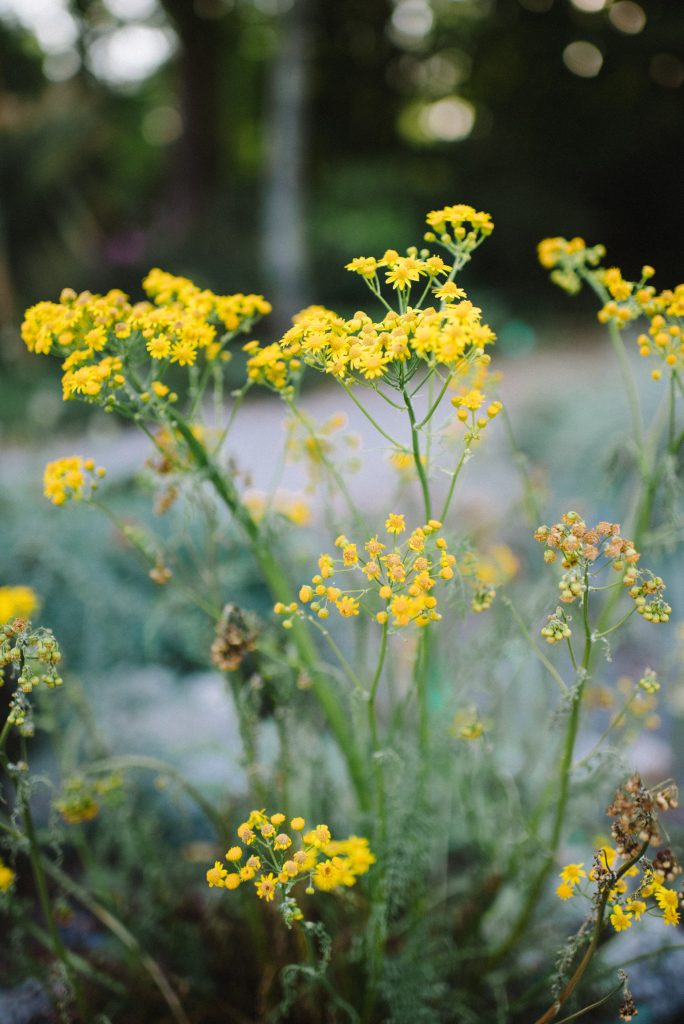
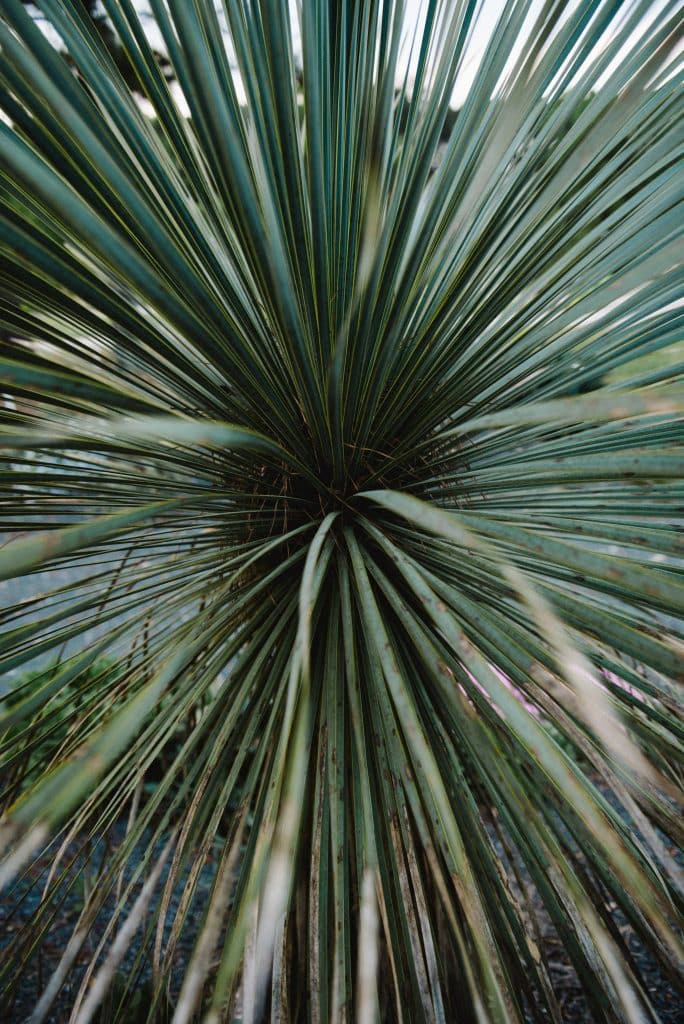
Tony has received many accolades for his work, including the recent and most prestigious Royal Horticultural Society Veitch Memorial Medal, of which only 27 have been awarded in the society’s 150-year history, for his outstanding contribution to the advancement of the science and practice of horticulture.
JLBG hosts open garden weekends eight times per year (the next two will be the first two weekends in May). A walk through the grounds could convince just about any visitor that the award is well deserved.
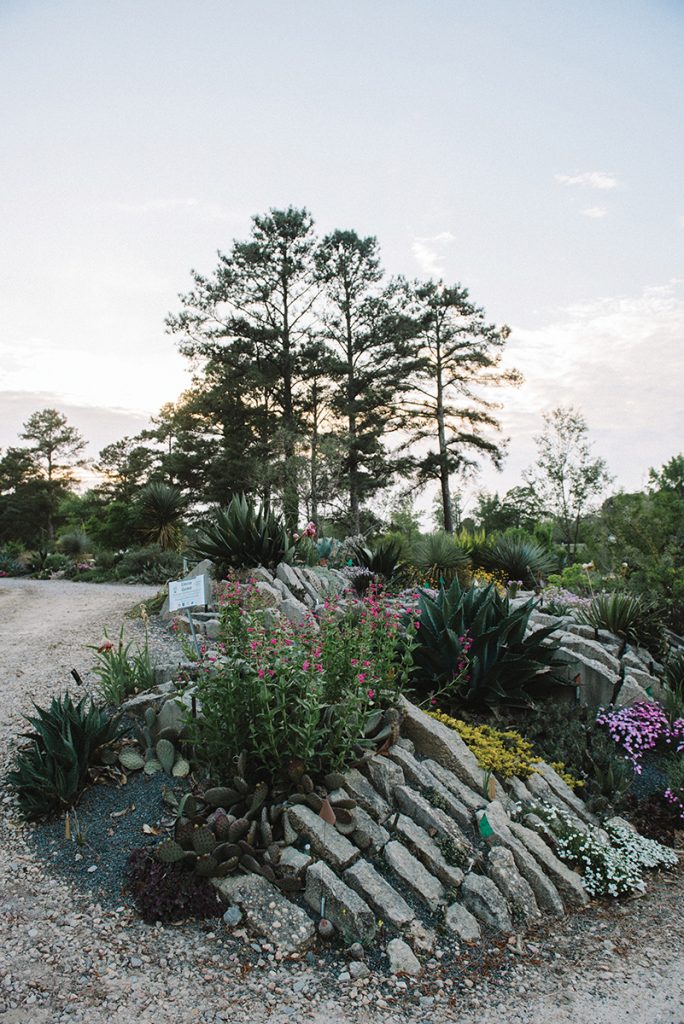

This article originally appeared in the April 2025 issue of WALTER magazine.

